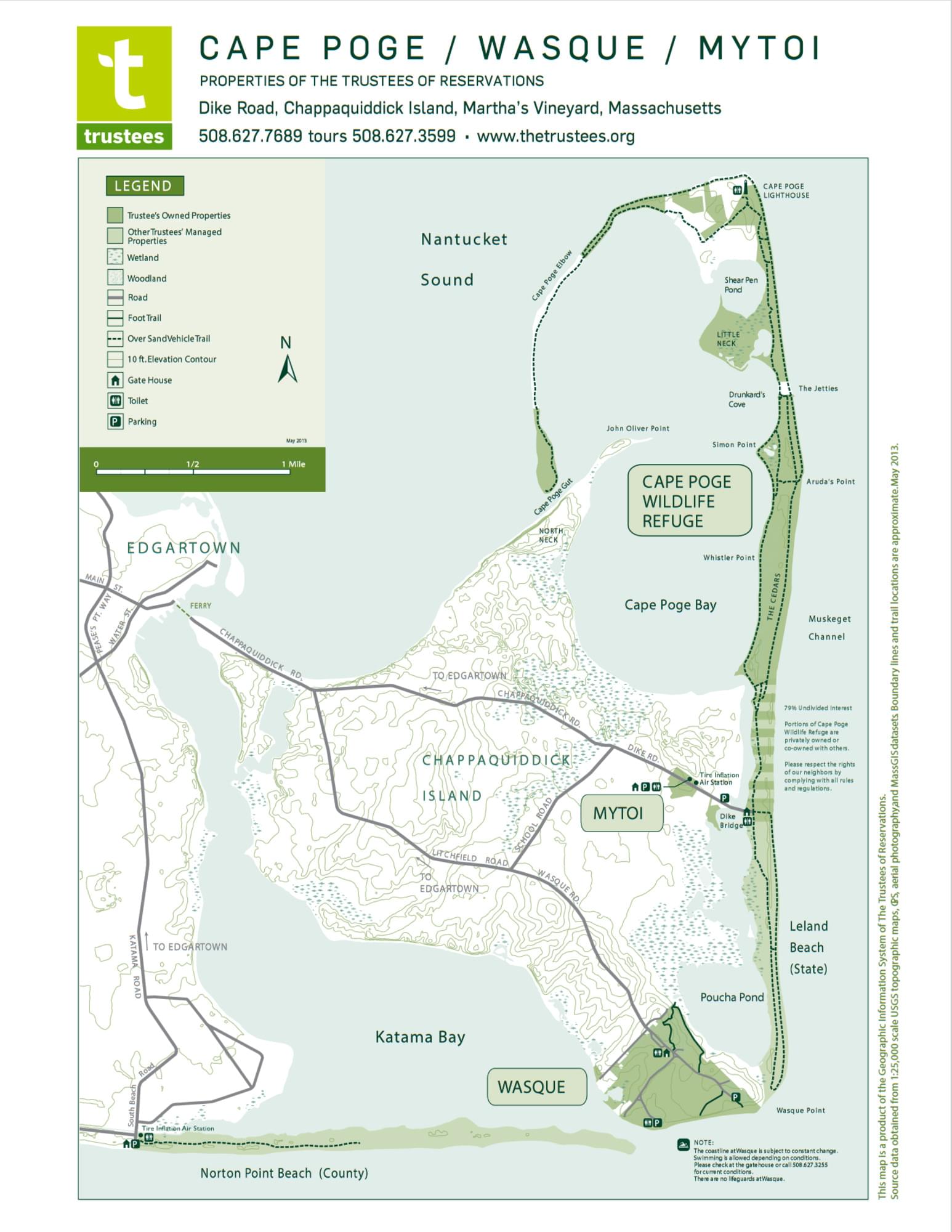Wasque Reservation (TTOR)
Wasque Reservation (TTOR)
The Trustees of Reservations Edgartown, Massachusetts 02539
Wasque Reservation Official WebsiteWasque map
Tips for Birding
When submitting eBird observations at Wasque Reservation, it is most helpful to start a new checklist for each hotspot in the reservation. Use the general hotspot when you have a checklist that includes multiple locations or if no other hotspot or personal location is appropriate for your sightings.
About Wasque Reservation
See all hotspots at Wasque Reservation
On the southeastern corner of Martha’s Vineyard, storms and sea-level rise reshape the coastline here daily.
Wasque (“way-skwee”) is a land of shifting sands and changing ecology, where sea level rise, ever-fiercer storms, and strong long-shore currents demonstrate their impacts all along the coastline.
For generations, visitors and residents have fond memories of sweeping white sand beaches and boardwalks. Today, Wasque is in transition, undergoing what many Native Vineyarders remember from long ago. Shifting sandbars, strong long-shore currents, and the rapidly moving Breach will likely erode great portions of the swimming beach. Its dry, acidic, sandy soil nurtures an oak and pine forest, sandplain grasslands, and heathlands. Windy conditions, grazing, and fires have kept forests from taking hold here. It’s a place in a constant state of flux, where no two visits are ever quite the same.
Explore a habitat of rare sand barrens along half a mile of trails. Bring binoculars to zoom in on sandpipers, piping plovers, terns, and other shorebirds at the surf line. Glimpse monarch butterflies as they feed on the flowers of the Northern Blazing Star before migrating south.
Nature watchers can sit back and observe many bird species, including sandpipers, piping plovers, terns, and other shorebirds at the surf line, and ospreys hovering over the water’s surface, preparing to dive onto a fish. Poucha Pond contains marshes that offer a habitat for great blue herons, egrets, migrating shorebirds, and ducks.
Children can look for monarch butterflies as they feed on the flowers of the Northern Blazing Star before migrating south, while parents and caregivers scan for less dramatic appearing butterflies and moths such as mourning cloaks, sulphurs, and red admirals, which appear annually. And like the herons and egrets that congregate here to fish, saltwater anglers find Wasque a fine destination for striped bass and bluefish.
Features
Restrooms on site
Entrance fee
Content from Wasque Reservation Official Website
Last updated March 24, 2024
